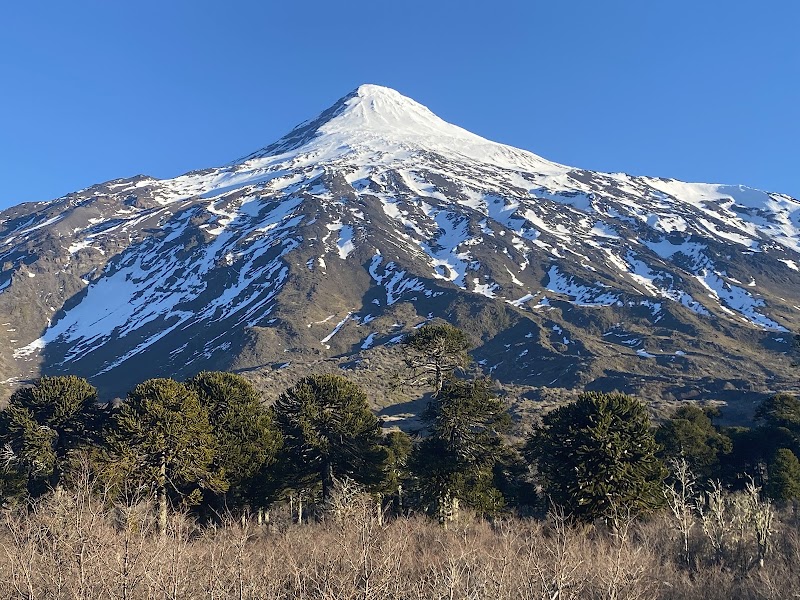
Winter Festival at Chapelco: Adventure and Culture in San Martín de los Andes
The Winter Festival at Chapelco in San Martín de los Andes offers an engaging blend of outdoor adventure and rich local culture. From snowshoe hikes through towering pine forests to lively cultural festivities, it delivers a unique Patagonian winter experience worth planning for.
Layer Smartly to Stay Dry and Warm
Use breathable base layers and waterproof outerwear to adapt quickly to changes in temperature and activity level during winter hikes.
Hydrate Regularly
Cold weather reduces thirst signals, but altitude and physical exertion increase fluid loss; carry insulated water bottles to prevent freezing.
Choose Footwear with Good Traction
Snow and ice demand sturdy, waterproof boots with non-slip soles to minimize risk on slippery terrain.
Start Hikes Mid-Morning
Begin between 9-10 a.m. to take advantage of better light and warmer temperatures, reducing risk posed by freezing conditions early and late in the day.
Winter Festival at Chapelco: Adventure and Culture in San Martín de los Andes
Each year, the Winter Festival at Chapelco transforms the snow-covered slopes and forests of San Martín de los Andes into a vibrant playground for outdoor enthusiasts and culture seekers alike. Positioned in Neuquén province, Chapelco Ski Resort isn’t just about skiing; the festival blends exhilarating winter sports with local traditions, music, and gastronomy, creating an experience that’s both thrilling and grounded in the Patagonian spirit.
The festival offers a range of activities from snowboarding and alpine skiing to guided snowshoe hikes that snake through thick pine forests where the trees stand strong against the chill, their branches heavy with snow daring you onward. Trails vary from gentle, well-trodden paths to challenging ascents with up to 800 meters of elevation gain, requiring stamina and attention but rewarding with panoramic views of the Lanín Volcano and shimmering lakes below.
Planning your trip here means gearing up for the elements without unnecessary weight. Quality waterproof boots with solid grip are essential as icy patches lie hidden beneath fresh powder. Dress in resilient, breathable layers to manage the sudden shifts in temperature, and always carry hydration—cold air and high altitude steal moisture faster than you expect. Timing is crucial; daytime excursions between 10 a.m. and 3 p.m. offer optimal conditions with firmer snow and clearer visibility.
Beyond the slopes, the festival welcomes you to experience vibrant craft markets, local Patagonian foods that warm with smoky lamb and fresh berries, and live music that animates the village square. The blend of natural challenge and cultural warmth frames an adventure that respects the landscape’s fierce yet inviting character.
For those who follow the call of the wild in winter, Chapelco's Winter Festival does more than entertain—it engages you in the performance of a landscape fiercely itself, waiting to be discovered with every careful step, every turn carved into the snow, and every breath of crisp, pine-laced air.
Nearby Trips
All Adventures
Boat Charters
Water Activities
Adventures near San Martín de los Andes, Neuquén
Discover the unique and memorable adventures that make San Martín de los Andes, Neuquén special.
Frequently Asked Questions
What is the difficulty level of hikes during the Chapelco Winter Festival?
Most hiking routes are rated moderate, involving distances between 5 to 12 kilometers and elevation gains around 600 to 800 meters. Trails are generally marked but may be slippery or variable in snow depth, so proper equipment and some experience with winter hiking are recommended.
Are there activities suitable for families at the festival?
Yes, the festival offers gentle snowshoeing trails, cultural workshops, and markets that welcome visitors of all ages. Family-friendly zones with music and food stalls provide entertainment beyond the slopes.
What wildlife might I see around Chapelco in winter?
Keep an eye out for Andean foxes, various bird species including Magellanic woodpeckers, and occasional traces of pudú deer. Wildlife tends to be more elusive in winter but can sometimes be spotted near forest clearings.
How can I best capture the landscape in photographs during the festival?
Early morning and late afternoon light bring out rich contrasts in the snow and highlight the volcano and lakes below. Chapleco’s ridges and open clearings serve as excellent vantage points for landscape and wildlife shots.
Are there any cultural traditions linked to the Winter Festival?
The festival celebrates Patagonian heritage with traditional music, artisan crafts, and cuisine. Locals often share stories and welcome visitors to immerse in the region's history tied to Mapuche culture and mountain life.
What environmental precautions are recommended during the festival?
Visitors should respect marked trails to avoid fragile alpine vegetation under the snow, carry out all garbage, and support local conservation efforts focused on protecting the native forests and wildlife habitats.
Recommended Gear
Waterproof Hiking Boots
Keeps feet dry and warm while providing traction on snow and icy patches.
Thermal Base Layers
Wicks moisture and maintains core temperature during exertion in cold air.
Insulated Water Bottle
Prevents water from freezing during extended outdoor activity at altitude.
Snowshoes or Microspikes
Snowshoes provide flotation over deep powder; microspikes add security on icy trails.
Local Insights
Hidden Gems
- "The Panoramic Viewpoint at Cerro Chapelco’s summit offers stunning views of Lanín Volcano and Lácar Lake often missed by casual visitors."
- "The small thermal pools near Hua Hum River provide a warm-down option after outdoor activities."
- "Less crowded snowshoe trails leading through the Las Bandurrias forest showcase untouched Patagonian wilderness."
Wildlife
- "Magellanic woodpecker"
- "Pudú deer"
- "Andean fox"
- "Southern Andean huemul (rare sightings)"
History
"San Martín de los Andes and Chapelco have deep Mapuche ties, with many festival events honoring indigenous traditions. The area’s development as a ski resort in the 1970s brought new layers of outdoor recreation culture, evolving into today’s vibrant winter festival."
